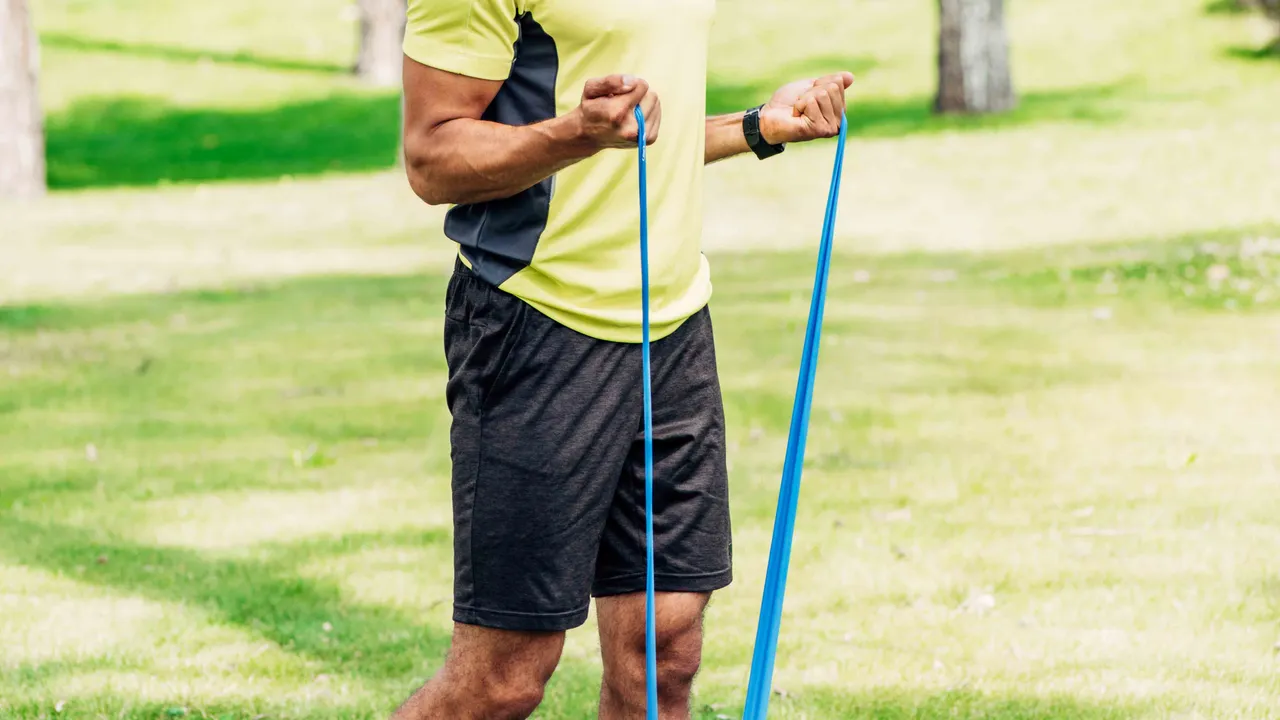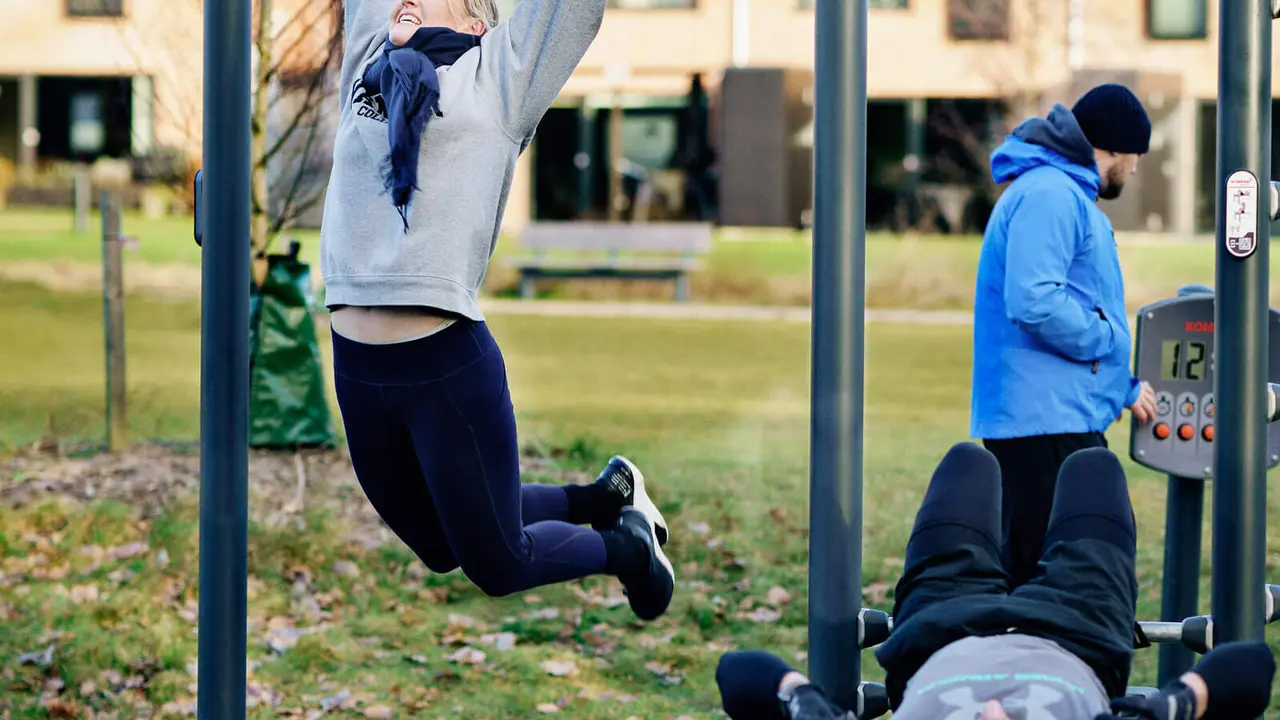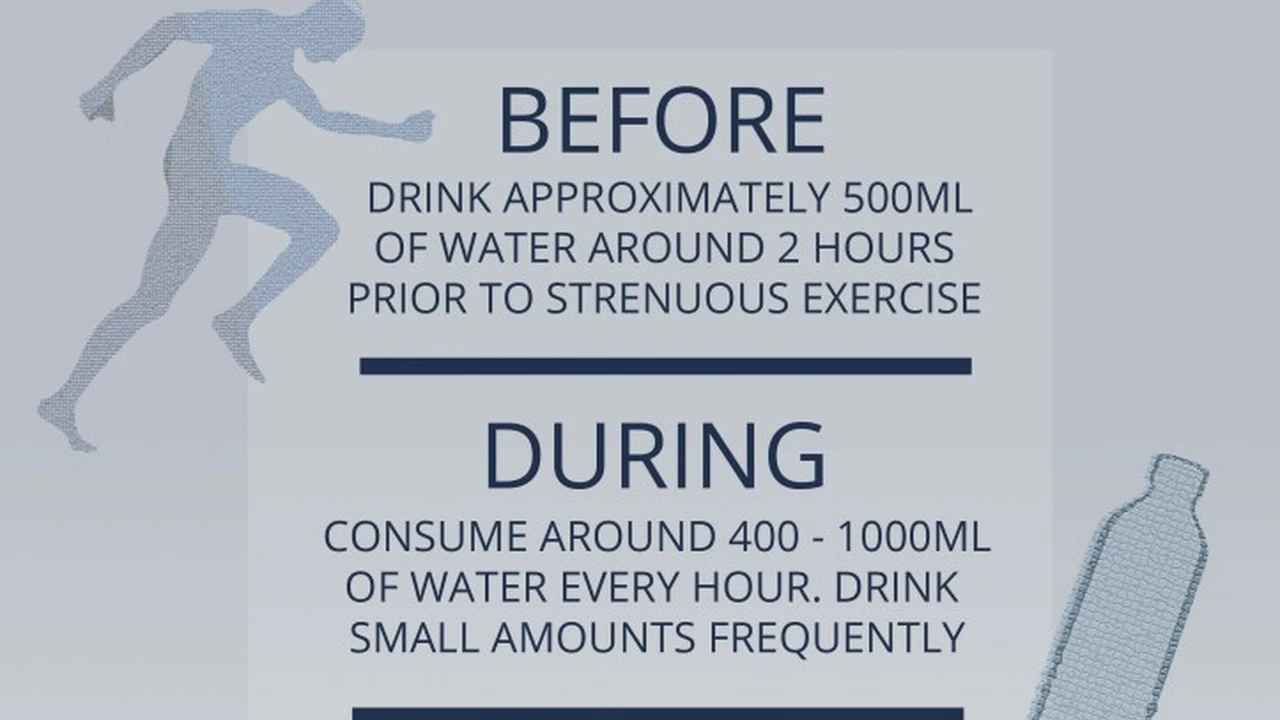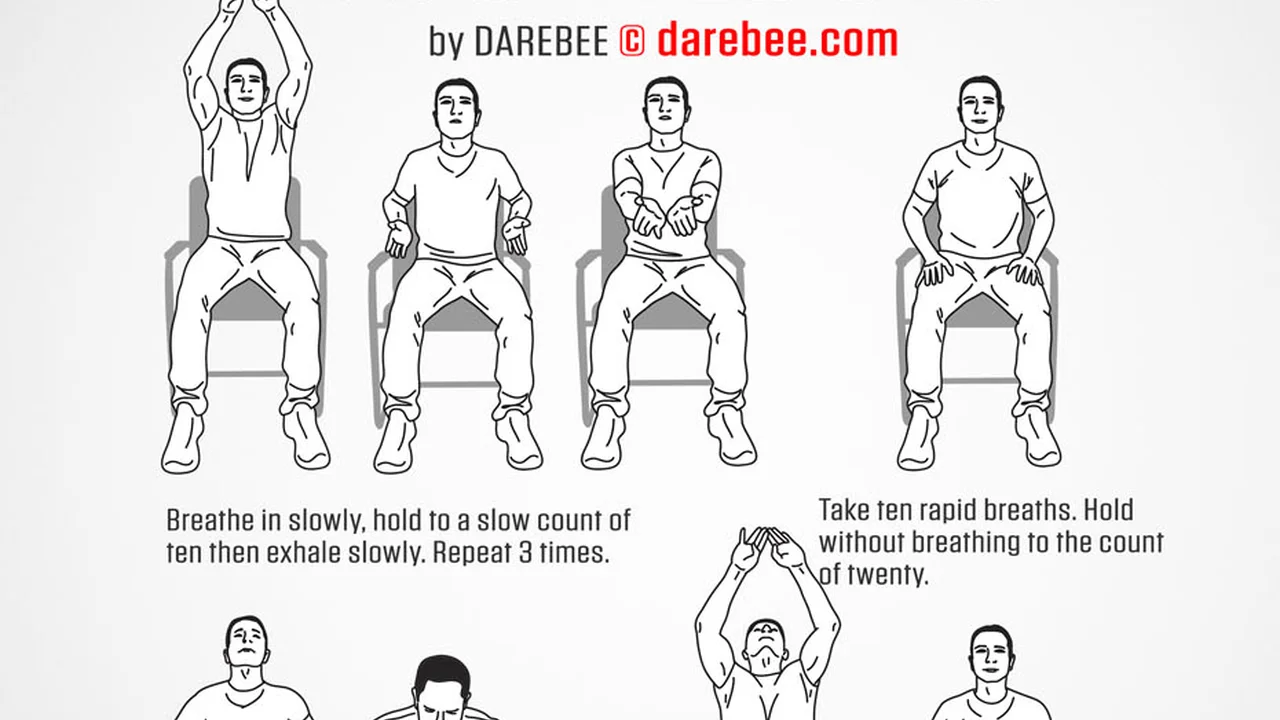Cool-Down Routine for Street Workout Recovery
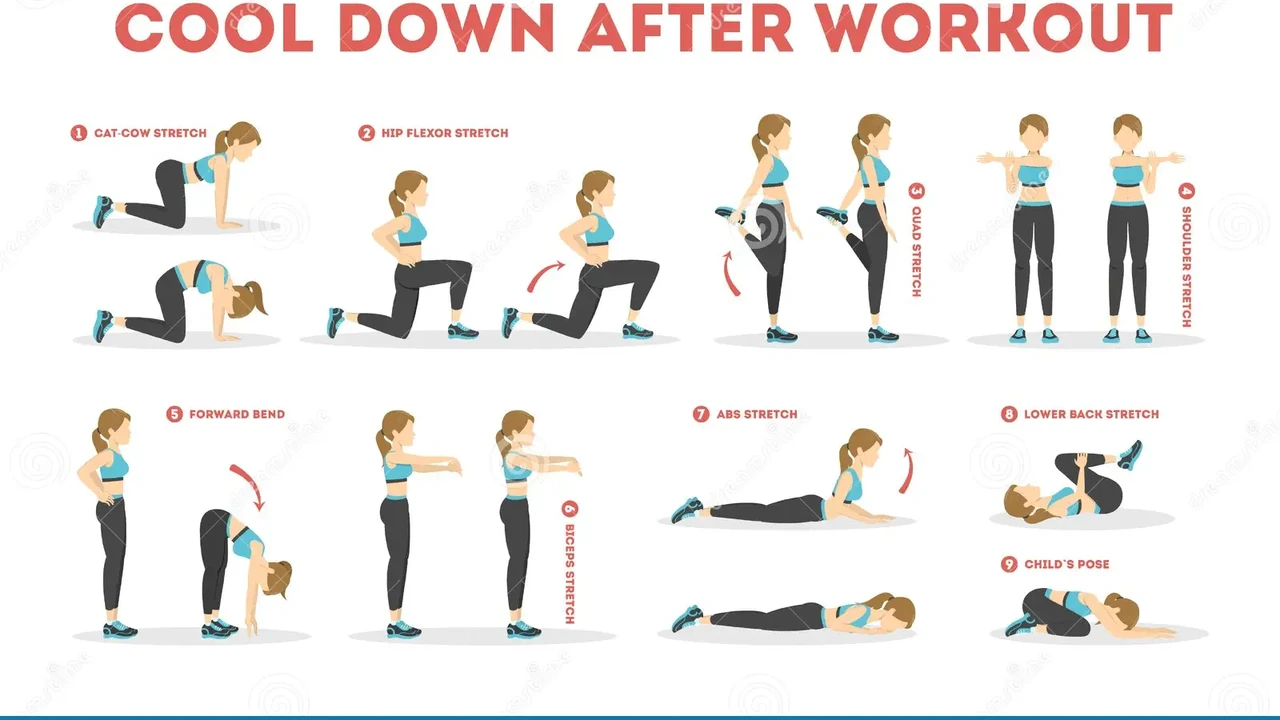
The Importance of a Proper Cool Down After Street Workout
Alright, you’ve just crushed your street workout session. Muscles are burning, endorphins are pumping, and you’re feeling like a superhero. But hold on! Don’t just collapse on the nearest bench and call it a day. A proper cool-down routine is absolutely crucial for recovery, injury prevention, and overall performance. Think of it as the final, vital piece of the workout puzzle.
Why is it so important? Well, during intense exercise, your heart rate and body temperature soar. Blood vessels dilate to deliver oxygen and nutrients to your working muscles. Suddenly stopping can cause blood to pool in your extremities, leading to dizziness, lightheadedness, and even fainting. A cool-down helps your body gradually return to its resting state, preventing these issues and promoting efficient recovery.
Furthermore, a cool-down helps to reduce muscle soreness and stiffness. By gently stretching and moving, you can flush out metabolic waste products like lactic acid, which contribute to muscle fatigue and discomfort. It also improves flexibility and range of motion, reducing the risk of injuries in future workouts.
Think of your body like a finely tuned engine. You wouldn't rev it up to the redline and then immediately shut it off, would you? You'd let it idle for a bit to cool down and prevent damage. The same principle applies to your body after a street workout.
Effective Cool Down Exercises for Street Workout Athletes
So, what exactly does a good cool-down routine look like? It should consist of two main components: light cardio and static stretching. Let's break down each element:
Light Cardio for Street Workout Recovery
The purpose of light cardio is to gradually lower your heart rate and body temperature. This could involve activities like:
* **Walking:** A brisk walk for 5-10 minutes is a great way to start your cool-down. It keeps your blood flowing and helps to clear out metabolic waste. * **Light Jogging:** If you're feeling up to it, a light jog can further accelerate the recovery process. Just make sure it's low intensity and doesn't put too much stress on your joints. * **Cycling:** A few minutes on a stationary bike at a low resistance can also be beneficial. * **Jumping Jacks (Modified):** Slower, less intense jumping jacks can help maintain blood flow without overexertion.The key is to keep the intensity low and focus on controlled movements. You should be able to comfortably hold a conversation while performing these activities.
Static Stretching for Street Workout Flexibility
After light cardio, it's time to focus on static stretching. This involves holding a stretch for a sustained period of time, typically 20-30 seconds. Static stretching helps to improve flexibility, reduce muscle tension, and promote relaxation.
Here are some effective static stretches for street workout athletes:
* **Hamstring Stretch:** Sit on the ground with your legs extended in front of you. Reach towards your toes, keeping your back straight as possible. Hold for 20-30 seconds. This targets the hamstrings, which are often tight from exercises like squats and lunges. * **Quadriceps Stretch:** Stand tall and grab your foot behind you, pulling it towards your glutes. Hold for 20-30 seconds. This stretches the quadriceps, which are heavily used in exercises like jumping and running. * **Calf Stretch:** Stand facing a wall and place your hands on the wall for support. Step one leg back and press your heel towards the ground. Hold for 20-30 seconds. This stretches the calf muscles, which are important for ankle stability and power. * **Chest Stretch:** Stand with your feet shoulder-width apart and clasp your hands behind your back. Gently lift your arms upwards, feeling a stretch in your chest. Hold for 20-30 seconds. This counteracts the rounded shoulders that can result from exercises like push-ups and dips. * **Shoulder Stretch:** Reach one arm across your body and use your other arm to gently pull it closer. Hold for 20-30 seconds. This stretches the shoulder muscles, which are involved in a wide range of street workout movements. * **Triceps Stretch:** Reach one arm overhead and bend it at the elbow, reaching towards your upper back. Use your other hand to gently pull your elbow further down. Hold for 20-30 seconds. This stretches the triceps, which are used in exercises like push-ups and dips. * **Back Stretch (Cat-Cow):** Get on your hands and knees. Alternate between arching your back towards the ceiling (like a cat) and dropping your belly towards the floor (like a cow). Hold each position for a few seconds. This improves spinal mobility and reduces back pain. * **Hip Flexor Stretch (Kneeling):** Kneel on one knee with your other foot flat on the ground in front of you. Gently push your hips forward, feeling a stretch in the front of your hip. Hold for 20-30 seconds. This stretches the hip flexors, which can become tight from sitting for long periods. * **Glute Stretch (Figure Four):** Lie on your back with your knees bent and your feet flat on the ground. Place your right ankle on your left knee. Gently pull your left thigh towards your chest. Hold for 20-30 seconds. This stretches the glute muscles, which are important for hip extension and stability.Remember to breathe deeply and relax into each stretch. Avoid bouncing or forcing the stretch, as this can increase the risk of injury. Focus on feeling a gentle pull in the muscle, not pain.
Recommended Products for Street Workout Recovery
To further enhance your recovery after a street workout, consider incorporating some of these products into your routine:
Foam Rollers: Myofascial Release for Muscle Soreness
Foam rolling is a form of self-myofascial release that helps to break up muscle knots and improve blood flow. It can be particularly beneficial for relieving muscle soreness and stiffness after a challenging workout. Think of it as a DIY massage.
**Product Recommendation:** The **TriggerPoint GRID Foam Roller** is a popular choice among athletes. It features a multi-density surface that allows you to target different muscle groups with varying levels of pressure. It's also durable and lightweight, making it easy to transport.
**Use Case:** After your cool-down stretches, spend 10-15 minutes foam rolling your major muscle groups, such as your quads, hamstrings, calves, back, and shoulders. Focus on areas that feel particularly tight or sore. Roll slowly and deliberately, pausing on any knots or trigger points for 30-60 seconds.
**Product Comparison:** There are many different types of foam rollers available, ranging from smooth rollers to textured rollers to vibrating rollers. Smooth rollers are generally more gentle and are suitable for beginners. Textured rollers provide a deeper massage and are better for breaking up stubborn knots. Vibrating rollers offer even more intense relief and can help to reduce muscle tension and pain. Consider your individual needs and preferences when choosing a foam roller.
**Detailed Information:** The TriggerPoint GRID Foam Roller typically costs between $30 and $40, depending on the size and retailer. It's made from high-quality EVA foam and is designed to withstand heavy use. It's also available in a variety of colors.
Massage Guns: Percussive Therapy for Deep Tissue Relief
Massage guns use percussive therapy to deliver rapid bursts of pressure to your muscles. This can help to increase blood flow, reduce muscle tension, and accelerate recovery. They're like a more powerful and targeted version of foam rolling.
**Product Recommendation:** The **Theragun Prime** is a well-regarded massage gun that offers a good balance of power, features, and price. It features a powerful motor that delivers up to 30 pounds of force, and it comes with four different attachments to target different muscle groups.
**Use Case:** After your cool-down stretches, use the Theragun Prime to target specific areas of muscle soreness or tightness. Spend 1-2 minutes on each muscle group, moving the gun slowly and deliberately. Avoid using the gun directly on bones or joints.
**Product Comparison:** There are many different massage guns on the market, ranging from budget-friendly options to high-end models. Factors to consider when choosing a massage gun include the power of the motor, the number of attachments, the battery life, and the noise level. The Theragun Prime is a mid-range option that offers a good balance of features and performance. Higher-end models, such as the Theragun Pro, offer even more power and features, but they also come with a higher price tag. Cheaper models may lack the power and durability of more expensive options.
**Detailed Information:** The Theragun Prime typically costs around $300. It comes with four different attachments: a dampener, a standard ball, a thumb, and a cone. It has a battery life of up to 2 hours and is relatively quiet compared to some other massage guns.
Compression Gear: Enhanced Blood Flow and Muscle Support
Compression gear, such as compression socks and sleeves, can help to improve blood flow, reduce muscle swelling, and provide support to your muscles. This can lead to faster recovery and reduced muscle soreness.
**Product Recommendation:** **CEP Compression Socks** are a popular choice among athletes. They provide graduated compression, which means that the compression is strongest at the ankle and gradually decreases towards the knee. This helps to improve blood flow back to the heart.
**Use Case:** Wear CEP Compression Socks after your street workout to help reduce muscle swelling and soreness. You can also wear them during your workout to improve performance and reduce fatigue.
**Product Comparison:** There are many different brands and types of compression gear available. Factors to consider when choosing compression gear include the level of compression, the material, and the fit. CEP Compression Socks are made from a high-quality blend of materials that is both breathable and durable. They also come in a variety of sizes and colors.
**Detailed Information:** CEP Compression Socks typically cost between $40 and $50. They are available in a variety of sizes to ensure a proper fit. It's important to choose the correct size to ensure that the socks provide the optimal level of compression.
Protein Supplements: Muscle Repair and Growth
Protein is essential for muscle repair and growth. Consuming a protein supplement after your street workout can help to accelerate the recovery process and promote muscle protein synthesis.
**Product Recommendation:** **Optimum Nutrition Gold Standard 100% Whey** is a popular and well-regarded whey protein powder. It contains a blend of whey protein isolate, whey protein concentrate, and whey peptides, which provides a complete source of protein.
**Use Case:** Mix one scoop of Optimum Nutrition Gold Standard 100% Whey with water or milk after your street workout. You can also add it to a smoothie or other beverage.
**Product Comparison:** There are many different types of protein supplements available, including whey protein, casein protein, soy protein, and plant-based protein. Whey protein is a fast-digesting protein that is ideal for post-workout recovery. Casein protein is a slow-digesting protein that is often consumed before bed to promote overnight muscle recovery. Soy protein is a plant-based protein that is a good option for vegetarians and vegans. The best type of protein supplement for you will depend on your individual needs and preferences.
**Detailed Information:** Optimum Nutrition Gold Standard 100% Whey typically costs between $30 and $60, depending on the size of the container. It is available in a variety of flavors, including chocolate, vanilla, and strawberry.
Electrolyte Drinks: Replenishing Lost Nutrients
During intense exercise, you lose electrolytes through sweat. Electrolytes are essential for maintaining fluid balance, muscle function, and nerve function. Replenishing electrolytes after your street workout can help to prevent dehydration and muscle cramps.
**Product Recommendation:** **Liquid I.V. Hydration Multiplier** is a popular electrolyte drink mix that contains a blend of sodium, potassium, and glucose. It is designed to help you hydrate faster and more effectively than water alone.
**Use Case:** Mix one packet of Liquid I.V. Hydration Multiplier with water after your street workout. You can also drink it during your workout to stay hydrated.
**Product Comparison:** There are many different electrolyte drinks available, ranging from sports drinks to electrolyte tablets to electrolyte powders. Factors to consider when choosing an electrolyte drink include the electrolyte content, the sugar content, and the taste. Liquid I.V. Hydration Multiplier is a low-sugar option that contains a good balance of electrolytes.
**Detailed Information:** Liquid I.V. Hydration Multiplier typically costs around $25 for a box of 30 packets. It is available in a variety of flavors, including lemon lime, passion fruit, and acai berry.
Hydration and Nutrition for Optimal Street Workout Recovery
Beyond the products mentioned above, proper hydration and nutrition play a vital role in your recovery. Make sure you're drinking plenty of water throughout the day, especially before, during, and after your workouts. Aim for at least half your body weight in ounces of water per day.
In terms of nutrition, focus on consuming a balanced diet that includes plenty of protein, carbohydrates, and healthy fats. Protein is essential for muscle repair and growth, carbohydrates provide energy, and healthy fats support hormone production and overall health. Good sources of protein include lean meats, poultry, fish, eggs, beans, and lentils. Good sources of carbohydrates include fruits, vegetables, whole grains, and legumes. Good sources of healthy fats include avocados, nuts, seeds, and olive oil.
Consider consuming a post-workout meal or snack within 30-60 minutes of finishing your workout. This will help to replenish your glycogen stores and provide your muscles with the nutrients they need to recover and rebuild. A good post-workout meal or snack should contain both protein and carbohydrates. Examples include a protein shake with fruit, a Greek yogurt with berries, or a chicken breast with sweet potato.
Listen to Your Body and Adjust Your Cool Down Accordingly
Remember, everyone's body is different, and what works for one person may not work for another. Pay attention to how your body feels and adjust your cool-down routine accordingly. If you're feeling particularly sore or fatigued, you may need to spend more time stretching and foam rolling. If you're feeling energized, you may be able to get away with a shorter cool-down.
Don't be afraid to experiment with different exercises and techniques to find what works best for you. And most importantly, be consistent with your cool-down routine. Make it a regular part of your street workout routine, and you'll reap the benefits in terms of reduced muscle soreness, improved flexibility, and increased performance.
The Long-Term Benefits of Consistent Street Workout Recovery
Investing in a proper cool-down routine and utilizing recovery tools isn't just about feeling better the next day; it's about building a sustainable and enjoyable street workout practice for the long haul. By prioritizing recovery, you're reducing your risk of injuries, improving your overall fitness, and making it more likely that you'll stick with your training goals.
Think of it as an investment in your future fitness. The time and effort you put into recovery will pay off in the form of increased strength, endurance, and flexibility, as well as a reduced risk of pain and injury. So, don't neglect your cool-down routine. Make it a priority, and you'll be well on your way to mastering fundamental street workout movements and achieving your fitness goals.
:max_bytes(150000):strip_icc()/277019-baked-pork-chops-with-cream-of-mushroom-soup-DDMFS-beauty-4x3-BG-7505-5762b731cf30447d9cbbbbbf387beafa.jpg)



